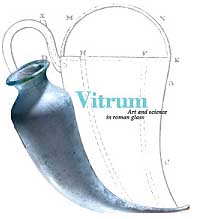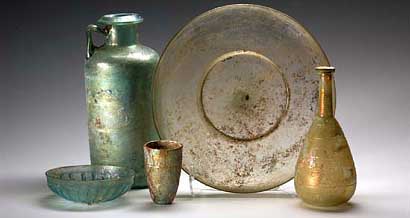|
VITRUM: GLASS BETWEEN ART AND SCIENCE IN THE ROMAN WORLD |
|
 Museo degli Argenti, Palazzo Pitti, Florence
Museo degli Argenti, Palazzo Pitti, Florence
March 27, 2004 - October 31, 2004
Opening hours:
Monday-Sunday
8.15-18.30 in May, September, October
8.15-19.30 in June, July, August
Closed: first and last Monday of each month
The ticket account closes one hour before the closing time
Information and booking: Firenze Musei Ph. - 39-055. 2654321
Archaeological findings and literary sources of the I century A.D. document a considerable production and use of glass objects in Vesuvian cities and numerous other centres of the Roman Empire. Today in many museums, we can observe the extraordinary quantity and variety of these artefacts, usually exhibited to arouse admiration for their shape, colour and decoration.
The striking, progressive diffusion of glass objects, in reality, derived from a profound technological innovation tied to experimental investigations and, in several cases, to a theoretical discussion on the material's composition and its scientific functionality. The technique of glass-blowing and the attention that ancient philosophers devoted to explaining the ultimate composition of the material, favoured an extraordinary encounter between art and science, between the craftsman's manual dexterity and the philosopher's intellectual achievement.
Indeed, glass objects were not made exclusively for commodity or to appeal to the prevailing aesthetic taste: the ancients in reality conceived of glass as an ideal material for the progress of knowledge. For this reason, the exhibition itinerary seeks to evidence how these cities were inhabited by men capable of working glass into apparatuses and devices which profoundly contributed to increasing the scientific and technological knowledge of antiquity and laid the basis for the "scientific" rediscovery of this material in the Renaissance.
In more general terms, Roman glass was a preferred source of inspiration in solving several fundamental theoretical problems, which led scientific curiosity onto till-then unexplored territories.
|
|
|
 |
|
|


